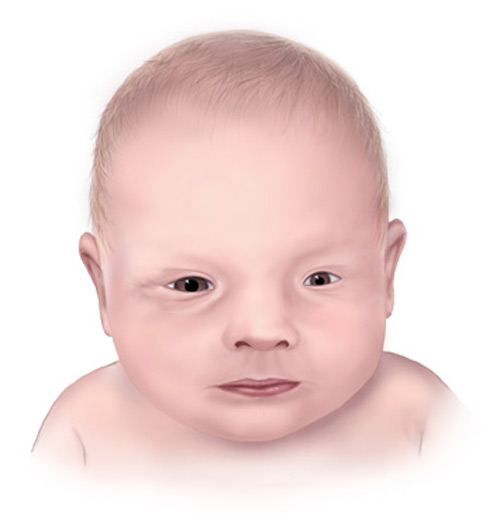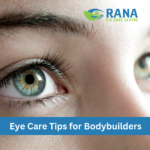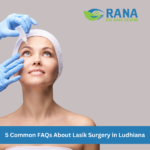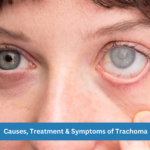Common Eye Diseases in Children
Taking care of your eyes and learning about your health is a first step to prevent vision loss caused due to common eye problems and the eye diseases that affect people in childhood. There are various types of eye diseases which are more common in children. Early detection will have better treatment or prognosis. This article will help the readers to identify these common eyes problems that can happen in their children.
1) Refractive Error: (Glasses)
A person has blurred vision either for near or distance or at any meridian.
Myopia:
It is also known as near-sightedness. A child sees nearer objects clearly but objects at a distance are blurry. It can be congenital or acquired. Myopia is caused due to the anatomic structure of the eye itself such as an increase in curvature of the cornea, crystalline lens, the anterior position of the lens and also due to excessive near work.
Progressive Myopia
In Progressive Myopia, power increase very rapidly. It is caused due to the abnormally rapid growth of the eye, hereditary, and other general factors. Outdoor activities are encouraged to stop progressing myopia.
Hypermetropia
A person sees nearer objects blurry. Plus lenses can be used to treat it.
2) CONJUNCTIVITIS
There are various types of conjunctivitis. Some types may transfer from one person to another and few may not. So, special consideration should be taken in case of communicable/infective conjunctivitis. It can transmit through a contaminated finger, clothes, water, etc. An eye looks red, patients feel pain, irritation, burning, itching or discharge or watery may be present or absent. Depending upon the sign and symptoms of the condition, the diagnosis will be made. All red eyes don’t mean conjunctivitis so consult with an eye specialist and follow the treatment plan.
3) AMBLYOPIA
It is generally known as lazy eyes. Detection of amblyopia can be done if there is a decrease in vision in one or both eyes. It can be due to long term uncorrected myopia, hypermetropia or astigmatism. Squinting of eyes also induce amblyopia. Lazy eyes can be managed by vision therapy in which a series of activities are created to do with the lazy or poorer eye.
4) SQUINT
It is also known as the crossed eye. It is the misalignment of eyes, either vertical or horizontal. Sometimes, an apparent squint may be present which is due to asymmetrical or symmetrical facial structure itself. True squint can be visible and sometimes, hidden squint can also be there which is detected during the cover-uncover test. Squint causes eyes strain, headaches, double vision and difficulty in doing near work.
Management:
- Vision therapy and different kinds of eye exercises are given to the person to make the eye straight.
- Surgically, the tightening or loosening of muscle is done to make parallel straight eye.
5) Keratoconus
It is the progressive eye disorder in which the anterior layer called cornea thins. The patient will notice blur vision, light sensitivity and also, it will be difficult to get a sharp vision with the spectacle.
Management:
Hard lenses: RGP lenses, rose K, scleral lenses, etc
C3R THERAPY – collagen cross-linking by riboflavin
Corneal transplant
6) Congenital cataract:
Opacification of the crystalline lens is not only present in the adults but can be also present in children that can occur in them by birth or shortly after birth. The color of the cataract depends upon the maturity of the cataract.
Management:
- The cataract should be removed surgically as soon as possible in order to avoid amblyopia
- Contact lenses can be the best option if the IOL isn’t implanted.
- PTOSIS
Ptosis is the abnormal drooping of the upper eyelid. It can be congenital or acquired, age-related or due to an injury, palsy, etc. It may hamper the vision depending upon the severity.
Management:
- The early correction will help for the proper development of a vision of a child.
- Ptosis crutches are available for the temporary solution of the ptosis.
- Oculoplasty surgical procedure helps to remove ptosis.
- ROP
Retinopathy of prematurity is one of the diseases of the retina in a premature baby with the gestational less than 31 weeks or the weight of less than 2 kg. Abnormal growth of the blood vessels in the retina will be present in this case. ROP has various stages. In the mild and moderate stage, the vision may not impair but in a severe situation, there will be impairment of vision. The child may have blindness, if not treated at the right time. So, the premature baby has to be taken to a retina doctor mandatorily.
Management:
- Cryotherapy and laser
- Other procedures like scleral buckling, vitrectomy, etc.
- RETINOBLASTOMA
RB is the malignant tumor which occurs in children less than 5 years of age, more often at age less than 2 yrs. It causes due to abnormal mutation when healthy cells die. It may be life-threatening, if not treated at an early stage. A child feels pain, black patches, blur vision, bulging eye, flashes of light and distorted vision.
Management
- Early diagnosis can save the eyes
- Several therapies like chemotherapy radiation and laser
- Enucleation, if the tumor grows from inside to outside
- Blepharitis
It is an inflammation in the oil glands of the eyelid. Crusting of eyelashes and eyelid will appear swollen.
Management
- Cleaning the eyelid with Johnson baby shampoo and warm compress
- Stye
Also known as a hordeolum, it is a painful red bump on the eyelid margin due to infected sweat or oil gland.
Management
- Warm compression
- Antibiotic
- Glaucoma
The pressure inside the eye increases more than normal which may damage the optic nerve resulting in field defect. The child may notice light sensitivity, persistent pain, watery eyes, and cloudy cornea.
Management
- Glaucoma in childhood usually needs surgery.
- Tear Duct Blockage
It can be caused due to inflammation in the duct. The child will have excessive tearing, particular redness, and irritation.
Management
- Gentle massage over the duct will help to open the blocked duct.
- Chalazion
It is the painless lump in the eyelid which appears when Meibomian gland gets clogged up.
Management
- Warm compression
- Sometimes, minor surgery required.
- Nystagmus:
It is a repetitive uncontrolled movement which hampers the vision. There are various types of dancing eyes. It can be horizontal, vertical, circular or pendular, etc.
Management:
- Nystagmus cannot be cured but the acquired nystagmus can go itself if the underlying causative factor is treated.
- Contact lenses can be a better option than a spectacle.
These all diseases are very common in childhood and management should be done by qualified eye surgeon .






No Comments